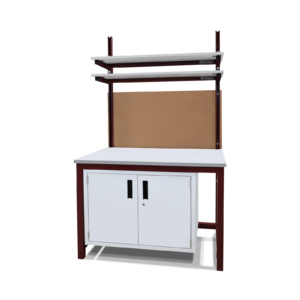As We Enter the Peak of the Holiday Season, Colorful Lighting Design is All Around Us
As the wintertime nights grow longer, holiday lighting takes center stage.
From twinkling Christmas tree lights to glowing menorah candles, these symbols of glad tidings, renewal, hope, and peace bring cheer to children of all ages.
Holiday lighting also reminds us that lighting can evoke strong emotions, whether memories of childhood, religious ceremonies, or the sharing of gifts between family and friends.

The Power of Lighting has an Outsized Effect on our Health and Well-being
Lighting can also have a direct effect on our health and well-being.
During the coronavirus outbreak, we wrote about how schools and healthcare institutions were using powerful UV light to sterilize buildings.
Light can seriously affect our health in other ways, whether we realize it or not.
While many of us may consider ourselves creatures of a modern urban lifestyle that offers us the opportunity to live, work, and play 24/7, scientists are discovering that nature may have other plans for us.
The natural circadian rhythms that govern our sleep cycles were built for dark skies.
Creeping light pollution, whether from handheld mobile devices or the bright lights outside your bedroom, is affecting our sleep and possibly contributing to poor health outcomes, including diabetes, obesity, and hypertension.
Surveys Confirm that Natural Lighting is a Valued Amenity
When it comes to being productive in the day, most of us place a high value on access to natural daylight.
Survey after survey confirms this, including our own Formaspace survey, which found that natural light was one of the top requests (among 82% of respondents) when asked, “Which workplace elements would make you more productive at work?”
What are Some Effective Strategies for Adding Natural Light to Your Interior Spaces?
If your existing building design doesn’t offer enough natural light, remodeling may offer a solution.
Glass partition walls are increasingly replacing traditional, opaque hallway wall panels, allowing light to extend deep into the floor plate.
Adding traditional skylights is also another way to bring natural light into the deeper interior spaces of the building.
More recently, architects and designers have also specified sky tunnels, which can transmit daylight through a curved or angular tunnel, achieving the same effect as the skylight in areas where it’s not possible to mount a skylight directly overhead.
Velux is a major vendor offering both traditional skylights as well as sky tunnel solutions.
When Sky Lights and Sky Tunnels are Not Feasible, Consider Adding Artificial Windows and Lighting Systems
Technology is offering new ways to bring the appearance of outdoor lighting and views into dark interior spaces.
You may have first heard about the use of full-sized video screens in the newest generation cruise ships, which offer passengers booked in interior cabins without windows a camera view of the ocean outside.
Innerscene is a vendor that is promoting this concept for lighting up dark rooms in commercial buildings and beyond.
As Federal Energy Saving Rules put Conventional Incandescent Light Bulbs Out to Pasture, Improved LED Lights are Ready for Prime Time
Moving onto interior lighting fixtures, one of the major historical shifts in lighting took place this year as federal regulations began requiring new lights for sale to achieve an energy efficiency of 45 lumens per watt.
These new energy-saving rules have caused light bulb manufacturers to stop selling traditional incandescent bulbs due to the fact that incandescent bulbs cannot meet the new energy standards. (Rest assured, sales of incandescent bulbs have not stopped entirely; the rules provide for many exceptions for things like freezer bulbs, specialty bulbs, etc.)
Broadly speaking, these new rules leave LED-based lights and fluorescent-based lights (including CFLs) as the only lighting products available on the market.
Fluorescent and CFLs may be on the chopping block next as the Energy Department considers raising the energy requirement to over 100 lumens per watt. Actually eliminating fluorescent and CFL light bulbs would also curtail mercury pollution in the environment, as most of these bulbs (which contain mercury) are dumped rather than properly recycled.
Fortunately, this shift to LED lighting is happening at a time when LEDs are really coming into their own. Long gone are the days when LEDs came in only red or green; now we have blue and white LEDs that can simulate a broad spectrum of lighting conditions.
LED lighting is also available in form factors that allow for a one-to-one replacement for existing fixtures, including the common 4-foot long fluorescent tube fixtures, ubiquitous in many workshops and industrial settings.
Because LED fixtures consume less energy, they also produce less heat, which might make them safer for use (e.g. pose less of a fire hazard) in many applications, including overhead spotlight cans that are recessed into the ceiling.
Use Color Temperature and Lumen Output to Specify LED Lighting
When specifying LED lights, it no longer makes sense to focus on wattage.
Instead, start thinking in terms of lumens when making comparisons.
It is equally important to choose the appropriate color temperature of the LED light output – to match your aesthetic intent, whether it is to replace the natural light of the sun, create a warmer, candle-lit environment, or replicate the look of traditional, incandescent bulbs.
If you take a look, you’ll be surprised how many new LED fixtures that can really simulate the warmth of incandescent lighting or even candlelight. One example is the very popular Pino Pro Cordless lamp, which provides intimate lighting suitable for white linen table service at a sophisticated restaurant.
Take a Tip from Professional Lighting Designers: Use the Layered Approach to Interior Lighting
A good lighting designer will think like a director of photography on a film set — and create sophisticated layers of different types of light, including direct lighting, backlighting, uplighting, downlighting, key lights, and more to build the desired visual atmosphere.
In a commercial setting, such as a work environment, different lighting elements are layered as well, allowing them to work together to create different effects.
A layered approach typically has a combination of natural and ambient lighting to illuminate the space, then adds layers of accent lighting and mood lighting to create character and nuanced visual appeal. Task lighting will be important in areas where people are working at workstations, tables, or desks.
Software Tools Allow You to Play Lighting Consultant
Experienced lighting designers have developed a sense of how to light an environment effectively, as well as how the lighting will change throughout the day. They will often create different combinations of lighting – for example, allowing them to turn a pleasant, calming, productive daytime working environment into a dramatic, theatrical visual environment at night.
One way to learn this craft is by experiment – using lighting software designed for architectural visualization.
Tools such as TwinMotion Lumen (from Epic, the makers of Fortnight and the Unreal game engine) and VRAY (which can use 3D models made in Sketch-Up) allow users to create realistic visualizations of actual sun positions throughout the day and the season and layer on different accurate lighting fixtures.
Have Fun with Lighting – Signature Light Fixtures Can Make an Important Statement
It’s not all about productivity. You can also enjoy lighting for its own sake.
At this most recent Milan Design Week, lighting designers were showcasing both classic, contemporary, and experimental lighting concepts.
At the Milan show, Google (a Formaspace client) partnered up with the artist Lachlan Turczan to create a magnificent interplay between light and water in its installation called “Shaped by Water.”
The Italian lighting manufacturer Flos celebrated the 60-year anniversary of its classic 1962 Arcos floor lamp, which has been inducted into New York’s Museum of Modern Art, with a limited edition Arcos K.
Flor also presented the new Bilboquet lamp collection by British Canadian designer Phillipe Malouin, a canister design that the New York Times called a “future classic.”
Pendant tubular gold and glass lighting canisters from Lee Broom were part of six new Broom collections introduced at the Milan show. These striking designs evoked mid-century modern and brutalism traditions from the 1960s and 1970s.
Our final pick from the Milan show is the Maison Matisse “Fold Collection – Formafantasma, with its strong, bold color panels creating a strong graphic design statement that, according to the designers, harkens back to Henri Matisse’s drawn outline figure paintings and paper cut out works.
Formaspace is Your Creative Partner
If you can imagine it, we can build it, at our Austin, Texas factory headquarters.
Talk to your Formaspace Sales Representative or Strategic Dealer Partner today to learn more about how we can work together to make your next construction project or remodel a success.









